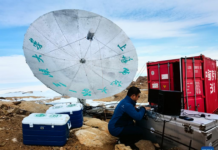Ukrainian scientists will take part in a study of the possible spread of silicones in the Antarctic. This is envisaged by the cooperation agreement signed between the National Academy of Sciences of Ukraine and Silicones Europe, a non-profit trade organization representing the interests of the main silicone producers in Europe.
We are talking about the detection of cyclic volatile methyl siloxanes. This particular group of silicone liquids is often used in cosmetics, such as shampoos, hair conditioners, deodorants, as well as in industrial products such as chemical solvents, industrial cleaning fluids, etc.
Since these substances are widely used, it is important to assess their distribution in the environment. Studying whether they are present in the Antarctic will help to understand whether these silicones are transported by air and water masses over long distances.

What scientists will do at the station
As part of the project, samples are planned to be collected in and around the Antarctic Peninsula (near the Akademik Vernadsky station):
- air using special traps;
- sediments;
- phytoplankton and krill in ocean waters from the Noosphere;
- Antarctic soils and mosses.
Research
Under the agreement, Silicone Europe will purchase a lot of necessary scientific equipment for NASC for high-quality sampling. Moreover, Ukrainian scientists will gain new experience in international cooperation for the sake of the global goal of preventing pollution of our planet.
It is planned that all samples will be sent to Norway in May. There, the scientists will analyze whether and in what concentrations the identified silicone liquids are present. By the end of 2024, scientists plan to have preliminary research results.
Similar research will also be conducted by the Polish Antarctic Program near their Artsovsky station.









